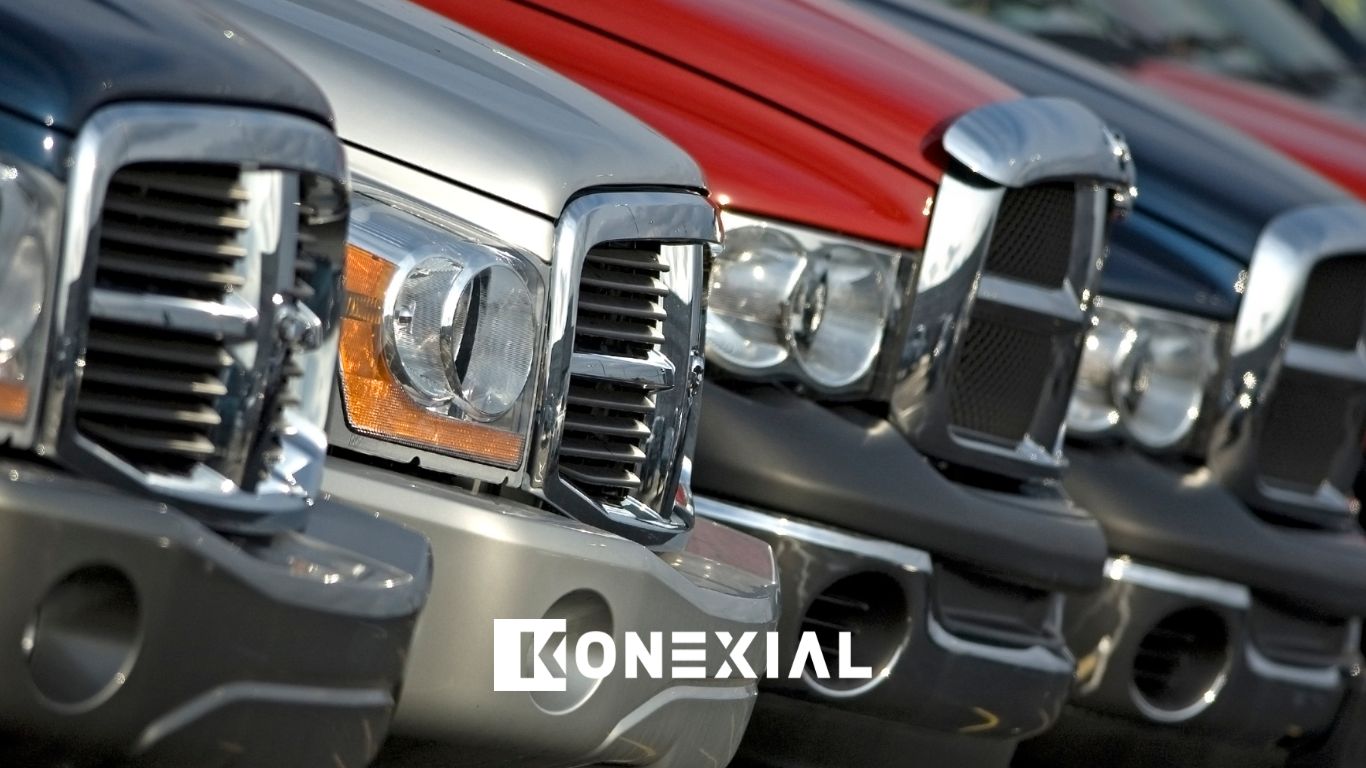What is Hotshot Trucking and How To Thrive Safely

What is Hotshot Trucking and How To Thrive Safely
Hotshot trucking is a niche yet vital segment of the transportation and logistics industry that powers the rapid delivery of goods across distances both short and long. Known for its flexibility, speed, and efficiency, this type of trucking caters to the urgent transport needs of various sectors, delivering everything from construction equipment to essential oilfield supplies.
This blog aims to take a closer look at the world of hotshot trucking for those intrigued by its potential and those considering a career behind the wheel of a hotshot rig. We’ll dive deep into what hotshot trucking entails, the unique challenges and rewards it offers, and how to not only navigate this dynamic field but thrive within it while placing a paramount emphasis on safety.
Whether you’re a seasoned trucker eyeing the hotshot niche or a newcomer with a passion for the open road, this guide offers the insights and practical advice needed to succeed in hotshot trucking. Join us as we explore the ins and outs of hotshot transport and uncover strategies for building a thriving, safety-first hotshot hauling business.
Hotshot Trucking 101
As mentioned, hotshot trucking refers to the transportation of relatively smaller, time-sensitive loads using medium-duty trucks. Medium-duty trucks include a wide range of vehicles designed for various commercial applications. Some examples of medium duty trucks include:
- Box Trucks: Also known as cube vans or straight trucks, these vehicles feature a cab and a box-shaped cargo area. They are commonly used for local deliveries, moving services, and transportation of goods.
- Flatbed Trucks: These trucks have a flat, open bed without sides or a roof, making them ideal for transporting large or irregularly shaped cargo such as construction materials, machinery, or equipment.
- Pickup Trucks: While pickups are often associated with personal use, they are also utilized in commercial settings for tasks such as towing trailers, carrying equipment, and transporting goods, particularly in hotshot trucking where they can be equipped with gooseneck trailers.
- Utility Trucks: Utility trucks, including service trucks, maintenance trucks, and bucket trucks, are equipped with specialized features such as toolboxes, cranes, or aerial platforms to support various utility or construction operations.
- Tow Trucks: These vehicles are designed to tow or recover other vehicles, making them essential for roadside assistance, vehicle transport, and towing services.
- Dump Trucks: Dump trucks are used for hauling loose materials such as sand, gravel, or demolition debris. They feature a hydraulic lift mechanism that allows the cargo bed to be raised and emptied, facilitating efficient material handling.
Unlike traditional long-haul operations, hotshot trucks are typically equipped with gooseneck trailers or flatbeds, allowing for quick and efficient delivery of freight. This flexibility and agility make hot shot trucking ideal for urgent shipments or smaller businesses that don’t require the capacity of a full semi-truck.
Hotshot trucking has been around for several decades. The term “hotshot” itself has roots in the oil industry, where it was initially used to describe the urgent delivery of critical equipment or materials to oil rigs or drilling sites. Over time, the concept expanded beyond oilfield logistics to encompass various industries and freight types requiring expedited transportation. While the precise timeline of hotshot trucking’s emergence as a distinct sector within the trucking industry is challenging to pinpoint, it has steadily gained prominence over the past few decades, fueled by advancements in technology, changes in consumer demands, and shifts in the logistics landscape. Today, hotshot trucking remains an integral part of the transportation ecosystem, offering swift and efficient solutions for time-sensitive freight needs.
Hotshot trucking stands out from traditional trucking in several key ways. Firstly, hotshot trucks are smaller and more maneuverable, often utilizing medium-duty vehicles like pickups or straight trucks, compared to the larger tractor-trailers common in traditional trucking. This allows for quicker response times and access to tighter spaces, ideal for expedited deliveries and navigating challenging terrain. Secondly, hotshot trucking prioritizes speed and flexibility, with drivers often operating on tight schedules to meet urgent shipment deadlines. Unlike the long-haul nature of traditional trucking, hotshot routes tend to be shorter and more focused on regional or local transportation needs. Additionally, hotshot trucking typically involves hauling smaller loads, enabling companies to efficiently utilize resources and cater to customers with varying freight requirements. Overall, the adaptability, agility, and speed inherent to hotshot trucking distinguish it as a specialized niche within the broader transportation industry.
The Hotshot Trucking Industry
The hotshot trucking market has experienced significant growth and evolution in recent years, driven by the demand for fast, reliable freight transportation services. Catering to a diverse array of industries, including construction, oil and gas, agriculture, and manufacturing, hotshot trucking offers a dynamic solution for time-sensitive cargo. This sector thrives on its ability to provide quick turnaround times and flexible delivery options, making it well-suited for small to medium-sized loads that require expedited transport. With advancements in technology and the increasing globalization of supply chains, the hotshot trucking market continues to expand, offering new opportunities for both established carriers and independent operators to carve out their niche in the competitive transportation landscape.
Hotshot trucking accommodates a wide range of goods, reflecting the diverse needs of industries reliant on expedited freight services. Commonly transported items include construction materials such as lumber, steel beams, and concrete supplies, which are essential for meeting project deadlines and keeping construction sites running smoothly. Additionally, hotshot truckers frequently haul equipment and machinery for industries like agriculture, where timely delivery is crucial for seasonal operations. Other goods commonly transported in hotshot trucking include automotive parts, manufacturing components, and perishable goods like produce and livestock. The versatility of hotshot transport enables businesses to streamline their supply chains and respond promptly to fluctuating market demands, enhancing overall efficiency and competitiveness.
Hotshot truckers play a pivotal role in the supply chain and logistics ecosystem, acting as a vital link between suppliers, manufacturers, and end customers. Beyond simply moving freight from point A to point B, hotshot truckers often serve as logistics partners, collaborating closely with shippers to optimize routes, coordinate deliveries, and ensure timely fulfillment of orders. Their agility, reliability, and commitment to customer service make them indispensable assets in today’s fast-paced business environment, where speed and efficiency are paramount for success.
Getting Started in Hotshot Trucking
Getting started in hotshot trucking requires careful planning, strategic decision-making, and a solid understanding of the industry’s nuances. Here are some top tips to help you embark on your hotshot trucking journey:
- Obtain Necessary Licenses and Permits: Ensure that you have the required licenses, permits, and certifications to operate as a hot shot trucker legally. This may include a commercial driver’s license (CDL), authority from the Federal Motor Carrier Safety Administration (FMCSA), and any state-specific permits for hauling certain types of freight.
- Invest in Reliable Equipment: Choose the appropriate equipment for your hotshot trucking business, considering factors such as payload capacity, fuel efficiency, and maintenance costs. Whether you opt for a pickup truck with a gooseneck trailer or a medium-duty truck with a flatbed, prioritize reliability and durability to minimize downtime and ensure safe transportation of goods.
- Develop Efficient Operational Processes: Streamline your operational processes to maximize efficiency and productivity. This includes optimizing route planning, load scheduling, and delivery logistics to minimize idle time and maximize revenue-generating opportunities.
- Focus on Safety and Compliance: Prioritize safety and compliance in all aspects of your hotshot trucking operations. Stay up-to-date with industry regulations, conduct regular vehicle inspections, and invest in driver training to ensure adherence to safety standards and mitigate risks associated with transporting freight.
- Monitor Financial Performance: Keep a close eye on your financial performance and track key metrics such as revenue, expenses, and profitability. Implement financial management tools and practices to maintain a healthy cash flow, manage expenses effectively, and make informed business decisions.
By following these top tips and committing to continuous learning and improvement, you can set yourself up for success in the competitive world of hotshot trucking.
Thriving as a Hotshot Trucker
Building a successful hotshot trucking business model requires careful planning, strategic decision-making, and a customer-centric approach. Start by identifying your target market and niche within the hotshot industry, whether it’s serving specific industries, transporting particular types of freight, or focusing on regional routes. Invest in reliable equipment and prioritize safety and compliance to build trust with clients and maintain a strong reputation. Develop efficient operational processes, optimize route planning, and leverage technology to streamline logistics and maximize productivity. Cultivate strong relationships with shippers, freight brokers, and other industry stakeholders to secure consistent business opportunities and foster long-term partnerships. Continuously monitor financial performance, track key metrics, and adapt your business model as needed to stay competitive and achieve sustainable growth in the dynamic hotshot trucking market.
Hotshot trucking provides a competitive edge in the transportation industry, enabling businesses to deliver goods swiftly and reliably while maintaining cost-effectiveness and customer satisfaction.
Safety in Hotshot Trucking
Common safety challenges in hotshot trucking are similar to long haul trucking and include managing fatigue, navigating challenging terrain, securing loads, and dealing with adverse weather conditions. Hotshot truckers often operate on tight schedules, leading to potential fatigue and increased risk of accidents. Additionally, the nature of hotshot transport may involve traversing rugged terrain or accessing remote locations, posing challenges for vehicle control and stability. Securing loads properly is crucial to prevent shifting or falling cargo, which can endanger both the driver and other road users. Furthermore, unpredictable weather conditions such as heavy rain, snow, or high winds can further exacerbate safety risks on the road.
To maintain driver safety while on the road in hotshot trucking, it’s essential to prioritize driver training and adherence to safety protocols. Implementing strict hours-of-service regulations through a robust fleet management solution and providing adequate rest breaks can help mitigate driver fatigue and promote alertness behind the wheel. Drivers should receive comprehensive training on defensive driving techniques, particularly when navigating challenging terrain or adverse weather conditions. Regular vehicle inspections and maintenance checks are imperative to ensure that trucks and trailers are in optimal condition for safe operation. Proper load securing practices, including the use of appropriate restraints and tie-downs, should be followed to prevent cargo from shifting during transit. Additionally, staying informed about weather forecasts and road conditions and exercising caution when driving in hazardous conditions can help minimize safety risks and ensure a safe journey for hotshot truckers and others on the road.
Hotshot trucking represents a dynamic opportunity for fleet owners and managers seeking to diversify their services and capitalize on emerging trends in the transportation industry. By embracing the agility and efficiency of hotshot transport, you can unlock new avenues for growth and deliver unparalleled value to your customers. Konexial can provide products and services to complement hotshot trucking business plans. Check out our offering today!







